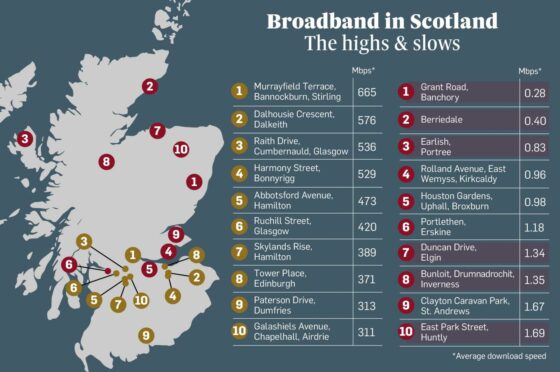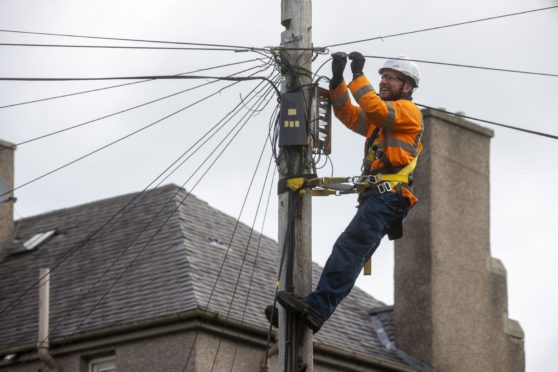A road in an Aberdeenshire town has earned the unenviable title of Scotland’s slowest street for broadband, according to recent analysis of consumer speed tests.
Six of the 10 slowest speeds are located in the north or north-east of the country, while all but one of the 10 fastest were recorded in the Central Belt.
However, the crown for most sluggish broadband has been claimed by Grant Road in Banchory, which has an average download speed of 0.28Mbps (Megabits per second).
That is 2,375 times slower than the quickest street in the country, Murrayfield Terrace in Bannockburn near Stirling, where the average speed was 665Mbps.
Also in the top three worst broadband spots were are Berriedale and Earlish, in Portree.
According to comparison site Uswitch.com, which carried out the research, people living on Grant Road would need more than 41 hours to download a two-hour HD film.

Meanwhile, those on Murrayfield Terrace could get the same movie in 62 seconds.
In a sign of the disparity between broadband speeds around the country, the street in Bannockburn was the furthest north postcode among the top ten fastest.
Only two of the 10 slowest postcodes were in the Central Belt, while two were in Fife, two were in Aberdeenshire and four were in the Highlands and Islands.
The new figures are based on analysis of 276,083 speed tests within 54,665 postcodes across the UK.
‘There is a lot more to be done’
Ernest Doku, a broadband expert at Uswitch.com, said: “It’s great to witness the increased uptake of ultrafast broadband, but we don’t want to see large swathes of the country left behind on shoddy connections that aren’t cutting it for modern life.
“Initiatives like the Universal Service Obligation and Project Gigabit are helping improve connections at both ends of the spectrum, but there is a lot more to be done so consumers don’t get left behind.
“Of the 10 slowest streets, nine could have access to faster broadband, so we urge residents there — and anyone else unhappy with their broadband speeds — to do a quick search online to see what speeds they could be getting with another provider.”
Earlier this month, digital network provider Openreach announced Alford, Portsoy, Cruden Bay, Lhanbryde, Inverness, Muir of Ord and North Kessock would be among the latest places to get connected to full-fibre broadband.
The Scottish Government’s Reaching 100% (R100) programme aims to connect everyone in Scotland to superfast broadband – defined as download speeds above 30Mbps.
